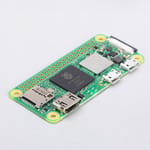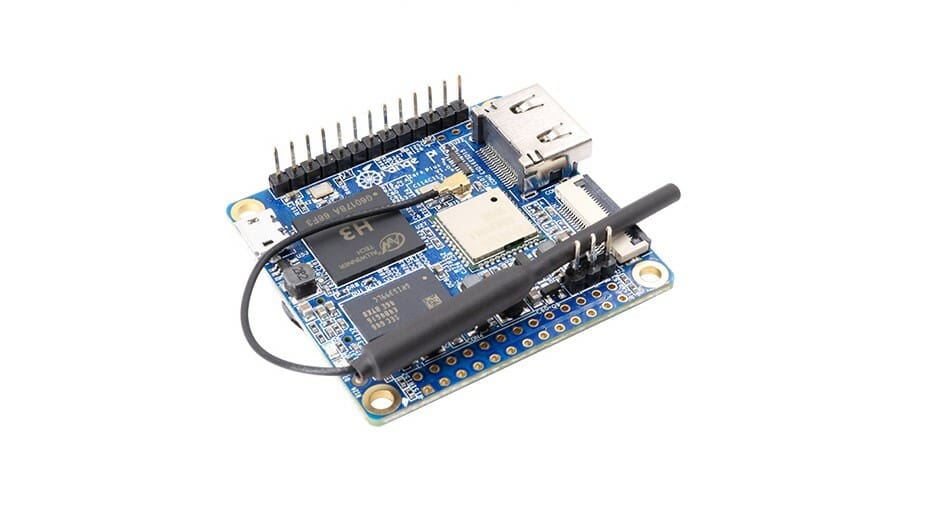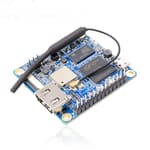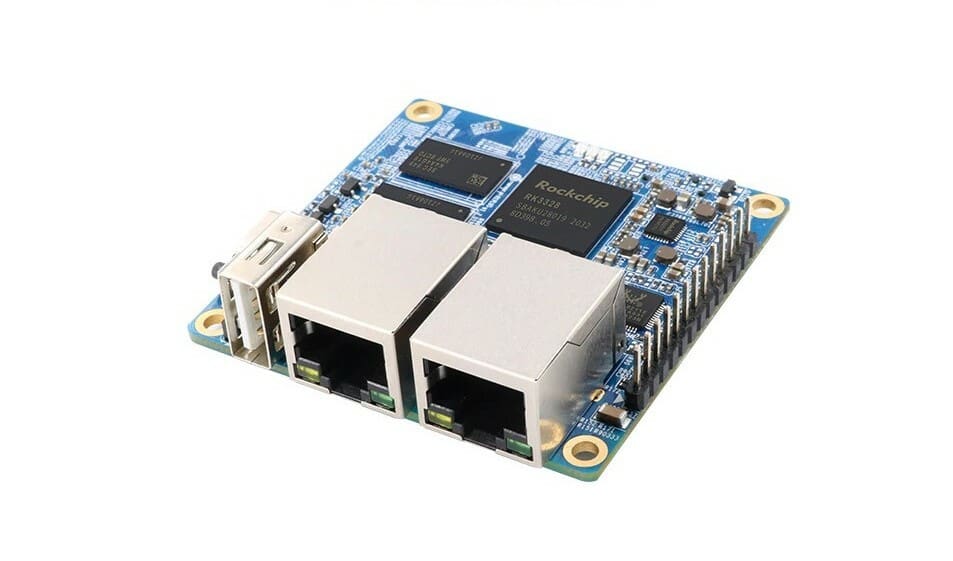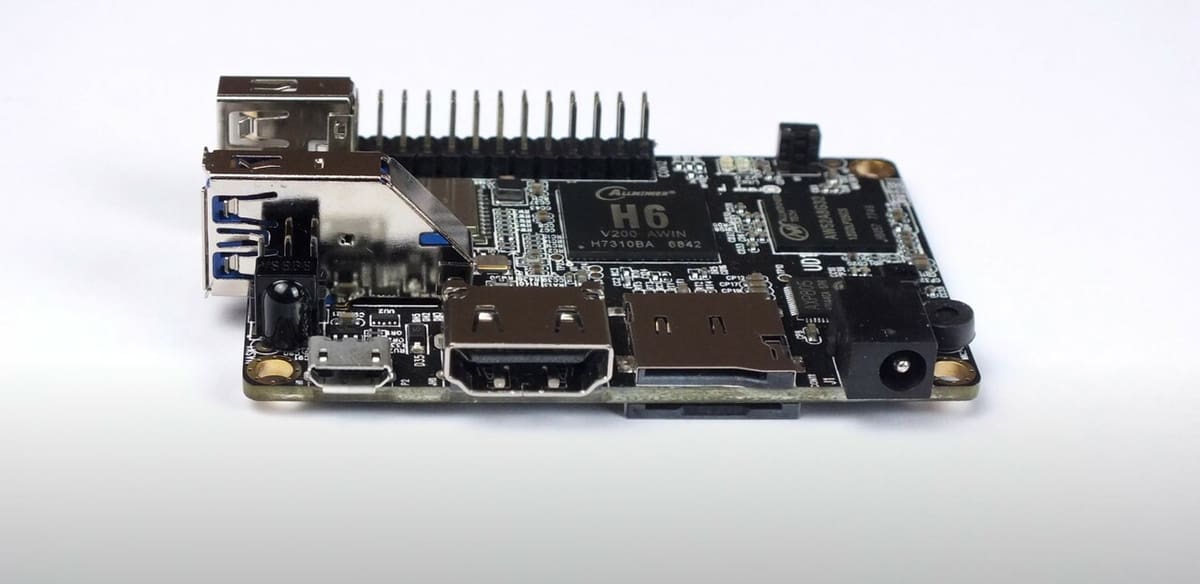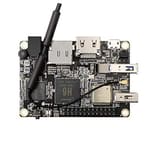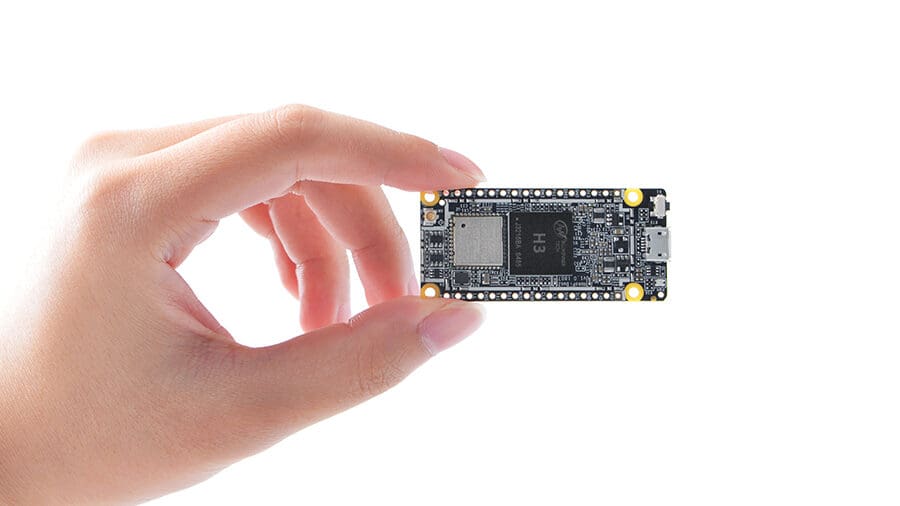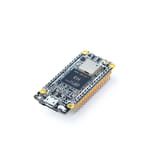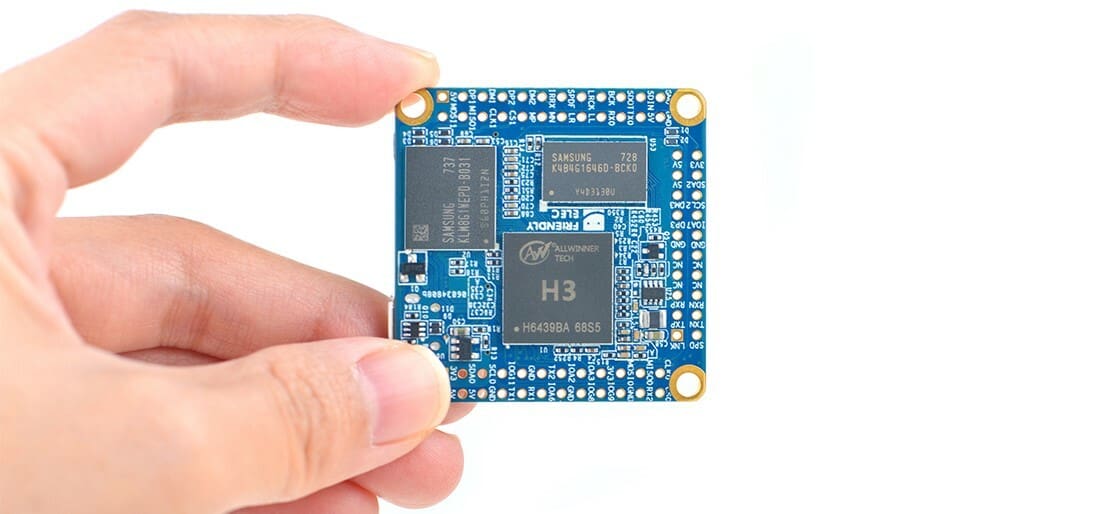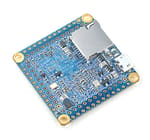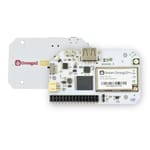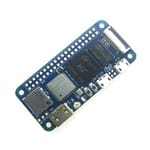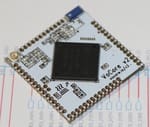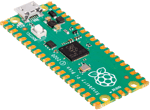Raspberry Pi has taken the world of small form factor PCs by storm. They’re affordable, compact, efficient yet powerful machines. From hobbyists to professionals, everybody can get one, making the possible use cases endless.
In practical terms, they’re full-fledged computers (they’re even known as SBCs, or single-board computers). Most recent models have a multicore 32 or 64-bit CPU, DDR RAM memory (oftentimes to the order of gigabytes), I/O options that resemble those present on a desktop or laptop (USB, Ethernet, 3.5-mm audio jack, and HDMI), and a set of programmable GPIO pins. They also support expandable storage in the form of a MicroSD card.
Being computers and not microcontrollers (like most Arduino boards, for example), they’ll probably require an additional level of software to work. For a lot of projects an operating system is needed, something like Raspberry Pi OS or Armbian. But the versatility of these machines is so great that it justifies every extra effort put into it.
In particular, in this article, we’ll focus our attention on the smallest Raspberry Pi boards and alternatives. Whether it’s for a wearable device or a weight-sensitive project, we’ve got you covered. But before jumping right in, let’s take a look at our sorting criteria.
Considerations
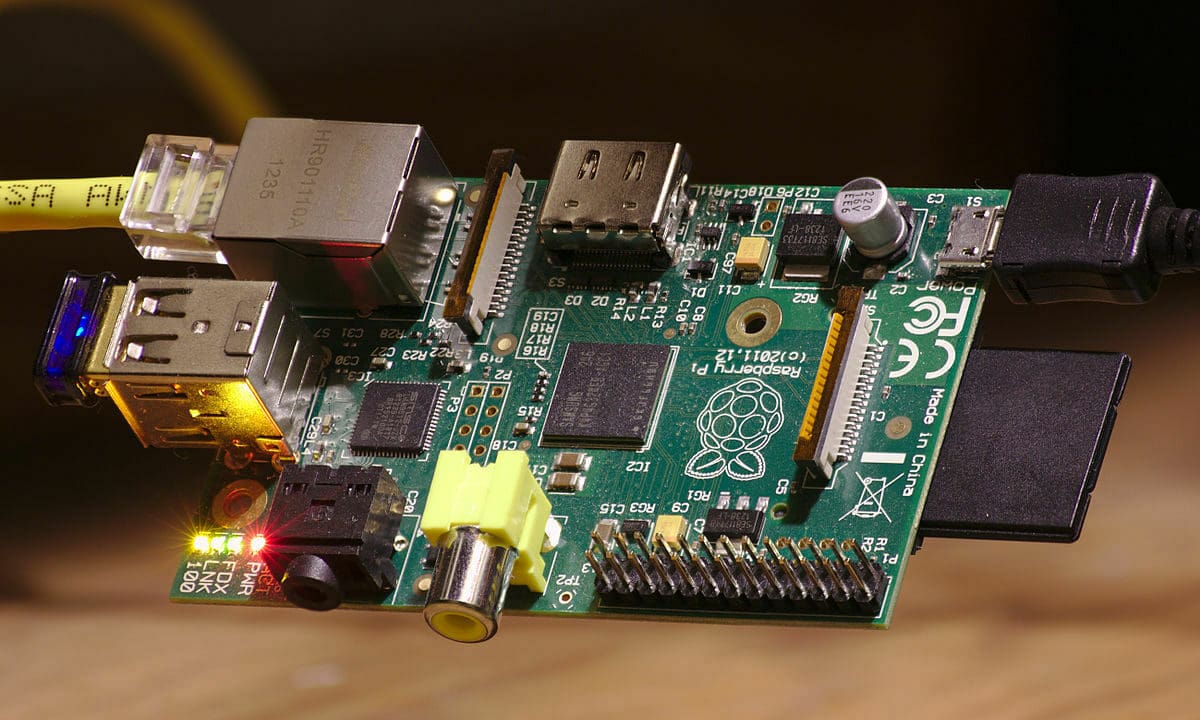
Raspberry itself offers only a handful of first-party, small-form-factor boards. The offer for third-party products, on the other hand, is immense. In order to narrow the field of tiny Raspberry Pi alternatives, we kept the following in mind:
- Small: To be considered the “smallest”, the footprint has to be smaller than a Raspberry Pi 4.
- ARM-based computer: Given the abundance of choice in terms of hardware, the only limitation we imposed is having an ARM-based CPU or SoC (System on a Chip: all the necessary components integrated into one chip).
- Linux-compatible: Most of the OS options available for ARM are distributions based on Linux. But if it’s able to run more classic operative systems (like Ubuntu or Debian), it’s definitely a plus.
- Programmable IO: Other than the I/O defined by the manufacturer, a Raspberry Pi alternative must have on-board programmable pins or at least traces for those.
Note that for some boards the listed operating systems only include the ones specified by the manufacturer. Others might be compatible, given the nature of Linux distributions.
Raspberry Pi Zero 2 W
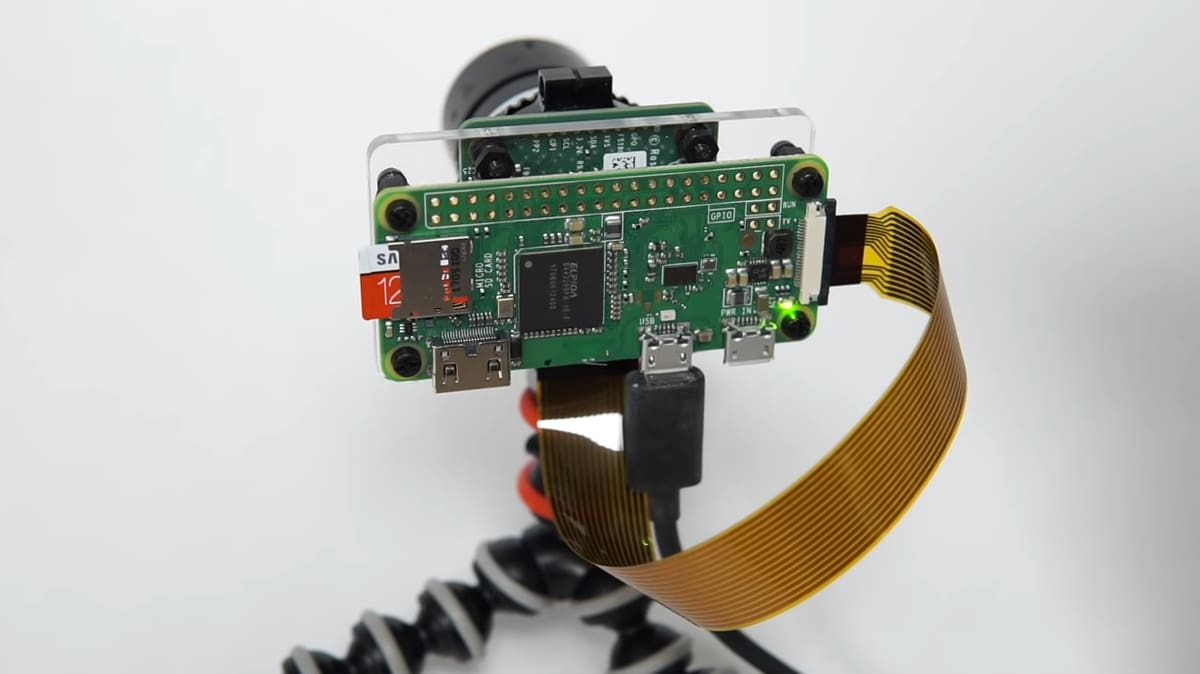
While Raspberry Pi boards appear microscopic in comparison to desktop or laptop computers, they’re not the tiniest SBCs available. A lot of third-party manufacturers have smaller offerings. But if you’re looking for a straightforward experience and don’t want to spend too much time in unexplored territories, the Raspberry Pi Zero 2 W is the way to go.
Based on the ad-hoc RP3A0 SoC, it features Wi-Fi and BLE connectivity, a CSI-2 camera connector, and a Mini-HDMI port. It has all the specs to process video feeds (including H.264 encode/decode and space for composite video pins). In some cases, it might be held back by the 512 MB of onboard RAM. Still, 1080p 30FPS streams shouldn’t be an issue. It’s a highly efficient SBC with minimal power consumption. And yes, it can run OctoPrint (with some compromises).
Genuine Raspberry Pi boards are the optimum choice for those looking for detailed documentation and step-by-step projects or tutorials. The vast and active community available through the official forums is also very helpful. And common boards like the Pi Zero will have the widest range of cases available to buy and 3D print.
- Specs: 1-GHz quad-core Arm Cortex-A53, 512-MB SDRAM
- OS: Raspberry Pi OS
- Dimensions and weight: 65 x 30 mm, 11 g
- Features: 40 pins, Wi-Fi+BLE, CSI-2 connector, Mini-HDMI, MicroSD, Micro-USB
- Price: ~$15
Orange Pi
Fruits and vegetables are a recurring naming scheme for this type of board. Orange Pi has a really big lineup, so here are our top picks.
Zero Plus2
Oftentimes, tiny means fewer ports and I/O. But the Orange Pi Zero Plus2 doesn’t give up on pins and connectors. With 26 GPIO pins plus an additional 13 pre-configured headers (for IR sensors, earphones, and a microphone), you’ll still be able to control everything you want. On top of that, it supports the usual debug TTL via UART (3-pin connector). It also includes a CSI camera ribbon connector, full HDMI port, and Wi-Fi and Bluetooth.
In terms of specs, it comes in two variants, with an Allwinner H3 or H5 SoC. They’re both clocked at 1.2 GHz, and both have four cores, but the H5 is a Cortex A53 (64-bit), while the H3 is a Cortex A7 (32-bit). The H5 also has a slightly more powerful GPU, the Mali-450MP4.
In terms of dedicated projects, Orange Pi’s forum has some interesting threads. Definitely take a look at this GitHub repository made by yasngleer that collects libraries, tools, tutorials, and finished projects!
- Specs: 1.2-GHz Allwinner H3/H5 quad-core Cortex-A53/Cortex-A7, 512-MB DDR3, 8-GB EMCC Flash
- OS: Android 4.4 (H3 version)/Android 5.1 (H5 version), Ubuntu, Debian
- Dimensions and weight: 46 × 48 mm, 36 g
- Features: 26+13 pins, Wi-Fi+BT, HDMI port, CSI camera connector
- Price: ~$35
R1 Plus
With the increasing demand for VPNs and secure networking for domestic use, the popularity of the PiHole project has skyrocketed. With PiHole you can set up your own hard-wired network-wide ad blocker and DNS, making browsing faster and more secure.
The R1 Plus has an edge over an original Raspberry Pi in this case. It mounts two Ethernet ports on separated chips (so you can set per-port parameters and drive them individually). This means you could set up in-line with your cable connection, with one port as input and the other as output. It will require some extra commands in order to work, but thankfully the project is completely open-source. It’s also a nice option for those who’re looking for a board for a Linux-based server, router, or general network device, and it can also run Android 9.
The hardware specs are more than decent. Among the most relevant are a quad-core Cortex-A53 64-bit SoC and a PMU (power management unit), which can come in handy if the board is powered through batteries and by offering OVP and OCP protection. Unfortunately, it lacks Wi-Fi or Bluetooth connectivity, though you can add them via the 13 I/O pin header. Or, if you prefer a more straightforward solution, you can downgrade to the R1.
- Specs: 1.5-GHz Rockchip RK3328 quad-core ARM Cortex-A53, 1-GB DDR4, 16-MB SPI Flash
- OS: Android 9, Ubuntu, Debian, OpenWRT
- Dimensions and weight: 56 × 57 mm, 30.5 g
- Features: 2x Ethernet ports, 2x USB ports, PMU, 13 programmable pins, MicroSD card slot
- Price: ~$50
Lite 2
The Orange Pi Lite 2 is on the bigger side of the spectrum but is still far from enormous. The extra space is crammed with features. It has an onboard microphone and IR receiver, CSI camera interface, Wi-Fi and Bluetooth, two USB-A, HDMI, MicroSD card slot, and an integrated PMU. But most importantly, it packs an Allwinner H6 SoC with a multi-core GPU, the Mali T720. The GPU supports DirectX graphics (albeit at the feature level 9_3). This CPU-GPU combo will have an edge over the Pi3B+ in terms of high-res video playback, supporting H265/HEVC for 4K 60fps and up to 6Kx4K 30fps. On the minus side, it doesn’t have an Ethernet port.
It’s one of the most versatile yet powerful boards on the list. If you want to make your own Android Smart TV or any other media-oriented project, it’s definitely an option to consider.
- Specs: Allwinner H6 quad-core ARM Cortex-A53, 1-GB LPDDR3, up to 32GB of expandable memory
- OS: Android 7, Ubuntu, Debian
- Dimensions and weight: 69 × 48 mm, 50 g
- Features: 26 pins, microphone, IR receiver, CSI camera interface, Wi-Fi+BT, 2x USB-A (one of which is USB 3.0), HDMI, MicroSD card slot, PMU
- Price: ~$50
NanoPi
If it has “nano” in the name, you know there’s a focus on dimensions. We’ve navigated the dozens of options and selected the ones we think fit the best features into the smallest form factors.
Duo2
With a form factor very close to the Raspberry Pi Pico, the Duo2 packs a mighty punch in a tiny space. It’s not a drop-in replacement, as the dimensions vary by a few millimeters, and it’s a full SBC rather than a microcontroller. Powered by a quad-core Allwinner H3, it features onboard Wi-Fi and Bluetooth, though it’s important to mention that the antenna for wireless communication is not included. There’s no Ethernet port soldered on the board, but you can add one via the pin header. On top of the 32 pins, it also incorporates an OV5640 camera connector. The footprint for an additional SPI Flash memory is present, but not populated.
In terms of computing power, compared to the red fruit company’s offering, the Duo2 is in a different league. It’s a great tool for image collection and processing, as well as IoT integration on a budget. Unfortunately, the lack of a dedicated community means that there are not many projects readily available. The first-party documentation, on the other hand, is really well written, covering the setup and first steps in detail.
- Specs: 1.2-GHz Allwinner H3 quad-core Cortex-A7, 512-MB DDR3
- OS: U-boot, Linux-4.14/3.4, Ubuntu 16.04.2 LTS (Xenial)
- Dimensions and weight: 25.4 x 55 mm, 7.36 g
- Features: 32 pins, Wi-Fi+BT, Micro-USB, MicroSD slot, OV5640 connector
- Price: ~$26
Neo4
If the space requirements aren’t that strict, but the I/O ones are, the Neo4 might be right for you. It features terrific I/O for its size: 40 GPOI pins, Wi-Fi, Bluetooth, an MIPI-CSI camera interface, and much more. It’s smaller than a Raspberry Pi 3B+ and (at least on paper) it’s also faster.
The Rockchip RK3399 that it mounts has two CPU clusters: a dual-core ARM Cortex-A72 (for high-performance computing tasks) and a quad-core ARM Cortex-A53 (optimized for low power). The higher-clocked GPU should give it an additional boost to graphic processing and encoding/decoding. It might be held back by the relatively small 1-GB DDR3 RAM. That said, the processor can actually address much bigger capacities.
The Neo4 is a heavy lifting champion in its category and has the cards to compete against already affirmed models. If you’re okay with sacrificing I/O and CPU power in favor of a smaller form factor, the older Neo3 is just 48 x 48 mm.
- Specs: Rockchip RK3399 dual-core Cortex-A72 (up to 2.0 GHz) + quad-core Cortex-A53 (up to 1.5 GHz), 1-GB DDR3
- OS: Ubuntu Desktop 18.04 (64-bit), Lubuntu 16.04 (32-bit), Ubuntu Core 18.04 (64-bit), Lubuntu Desktop (with GPU and VPU acceleration)
- Dimensions and weight: 60 x 45 mm, 30.25 g
- Features: 40 pins, Wi-Fi+BT, MIPI-CSI camera, 2x USB ports, Ethernet, eMMC module socket, HDMI, PMU, MicroSD slot
- Price: ~$50
Neo Core2
Some projects don’t need a lot of ports or connectors but require a lot of user-programmable pins. The NEO Core2 is all about that, with a whopping 68 free pins between I2C, I2S, SPI, UART, USB, GPIO, Ethernet, and audio connections. However, all of that pin real estate comes at the price of reduced onboard features (to keep the CPU traces free and available).
A MicroSD card slot and a MicroUSB is all you get (and oftentimes all you need). On the plus side, the integrated Allwinner H5 CPU comes with 1 GB of RAM and 8 GB of eMMC memory (with 16 GB/32 GB variants available). NanoPi sells also an expansion shield that adds more ports and features while maintaining the same form factor as a Raspberry Pi 3.
It’s not for everyone, but if your project requires a more hacky approach with plenty of soldering involved, versatility is something to look after. The Neo Core2 is a bridge between the world of microcontrollers and the one of SBCs.
- Specs: Allwinner H5 quad-core Cortex A53, 1 GB RAM, 8-GB/16-GB/32-GB eMMC
- OS: u-boot, Ubuntu Core 4.14
- Dimensions and weight: 40 x 40 mm, 6.35 g
- Features: 68 pins, MicroSD card slot, Micro-USB
- Price: ~$45
Onion Omega2 Pro
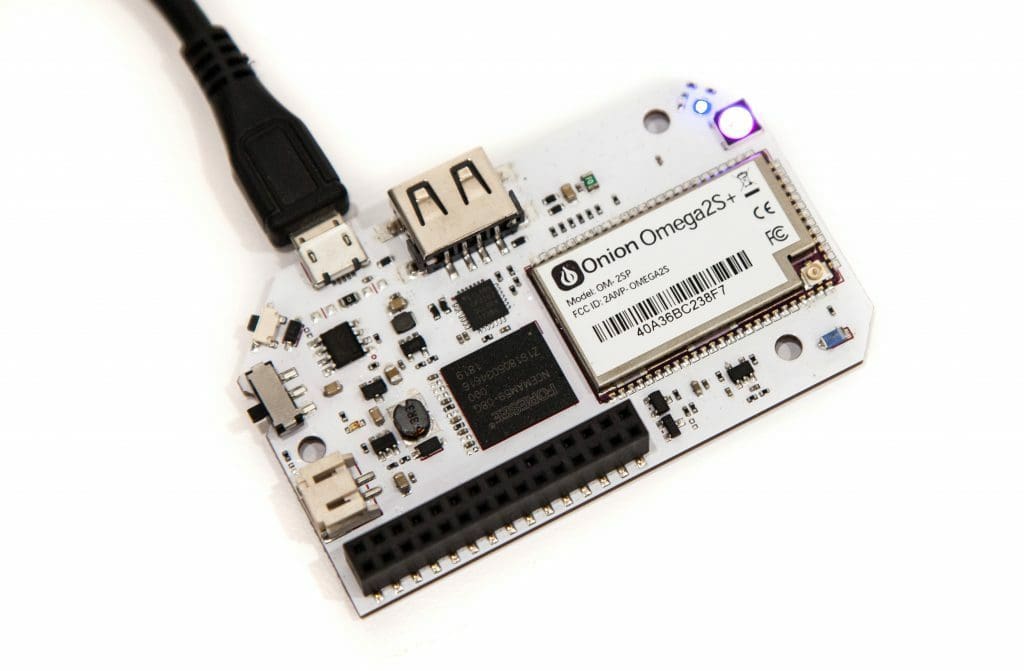
Technically speaking, the Onion Omega2 Pro is a development board for IoT devices. But nowhere is it said that it should be only used for that purpose. It’s chunky (73 x 44 mm), but still a small SBC compared to a Raspberry Pi 4.
Based on the Omega2S system-on-module, the Omega2 Pro board features 8 GB of eMMC memory, a 30-pin expansion header, a PMU with a battery connector, and a USB interface. Being designed for IoT devices, the dual-mode Wi-Fi connectivity allows the chip to simultaneously host a Wi-Fi access point and connect to existing Wi-Fi networks. There’s also a version with a screen, the OnionPi Omega2 Dash.
It’s a developer-oriented board, for sure, but it doesn’t gatekeep against newcomers. The Onion website has a set of starting tools helpful for beginners and pros alike. Beyond this, unfortunately there aren’t a lot of projects or dedicated communities out there.
- Specs: 580-MHz MT7688AN MIPS24KEc, 128-MB DDR2, 8-GB eMMC memory
- OS: OpenWRT (custom version based on the 18.06 Linux kernel)
- Dimensions and weight: 73 x 44 mm, 20 g
- Features: 30 pins, Wi-Fi, PMU, Micro-USB, USB-A
- Price: ~$50
Banana Pi M2 Zero
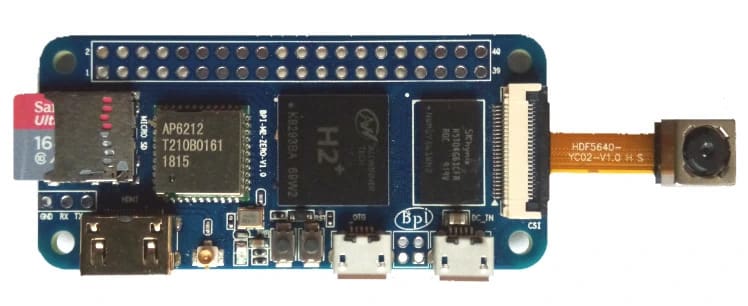
At the same size as the Raspberry Pi Zeros, the Banana Pi M2 Zero is clearly meant to be a drop-in replacement for those boards. While it is more powerful than the original Zero W, it performs poorly compared to the Zero 2 W. This is due to the Allwinner H2+/H3 32-bit CPU which, as previously mentioned, falls behind the Cortex-A53 64-bit architectures. But as the current shortages show, older but still capable third-party SBCs are still in high demand. The Banana Pi should be treated as an alternative to the original, and not necessarily a competitor. After all, it still has Wi-Fi, Bluetooth, a Mini-HDMI port, and a CSI camera connector.
While it comes in two different versions with two different CPUs, OS images meant for the H2+ should run on the H3 too. The only difference between the two should be the lack of Gigabit Mac and 4K HDMI output support on the H2+.
- Specs: 1.2-GHz Allwinner H2+/H3 1uad-core Cortex-A7, 512-MB DDR3
- OS: Android, Linux
- Dimensions and weight: 65 x 52.5 mm, 30 g
- Features: 40 pins, Wi-Fi+BT, Mini-HDMI, CSI connector, Micro-USB, USB-A
- Price: ~$40
VoCore2 Ultimate
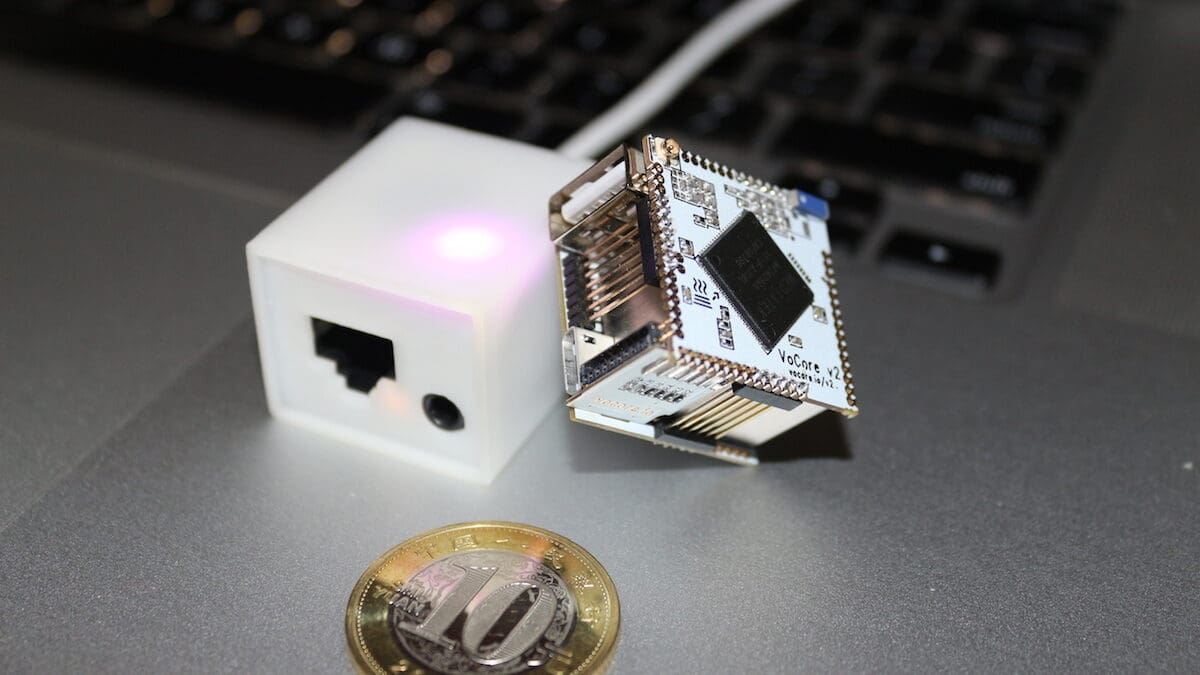
The VoCore2 Ultimate is so small it should be labeled as a choking hazard. With the smallest footprint on the list, at only 28 x 30 x 30 mm, it challenges the laws of physics. The board itself doesn’t come with any I/O connector or port, but only 40 free pins. For an Ethernet port, USB-A, MicroSD, and a 3.5-mm jack, you’ll need the Ultimate expansion board.
While it’s severely limited by the slow CPU and small amount of RAM, it’s also one of the best choices for low-level control (like an MCU) that can still be connected to a network. There’s 16 MB of memory onboard, expandable up to 2 TB. It’s also fully open-source, with PCB schematics freely available to everyone. It’s ideal for tight spaces and IoT devices, as it can be easily hidden in a switch box or other crevices.
- Specs: 580-MHz MT7628 MIPS 24K, 128-MB DDR2, 16-MB NOR
- OS: OpenWRT
- Dimensions and weight: 28 x 30 x 30 mm, 99 g
- Features: Up to 40 GPIO pins, Wi-Fi, expansion board adds 3.5-mm jack, Ethernet port, USB-A, MicroSD slot
- Price: ~$45
Bonus: Raspberry Pi Pico
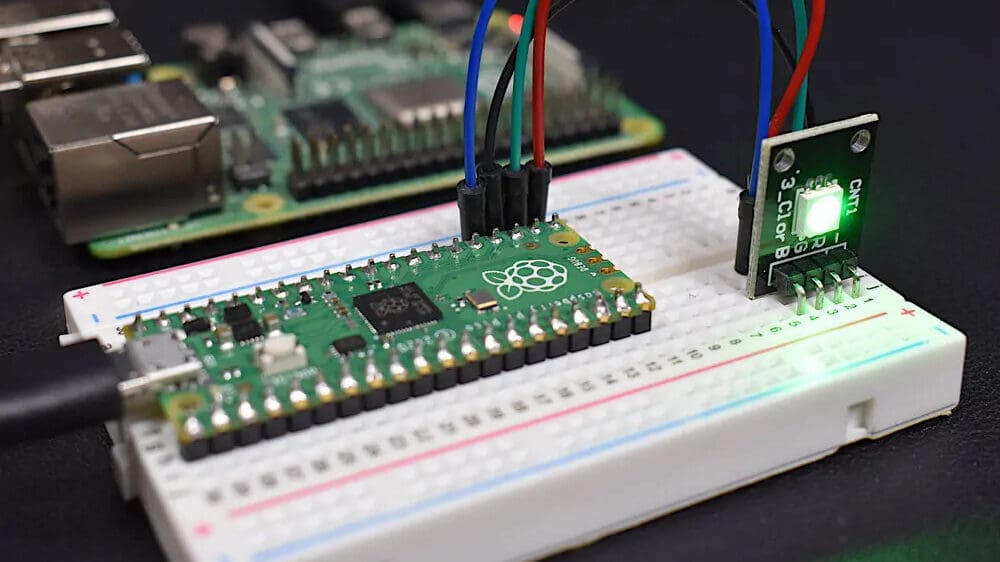
While it’s technically a microcontroller, we couldn’t omit the Raspberry Pi Pico from this list. Like the Neo Core2, it’s a great compromise between the flexibility of an MCU and the advantages of ARM architectures.
With 26 GPIO pins and 8 PIO pins (programmable IO pins that can be customized by the user), you won’t run out of space easily. Programming it is also very easy, with an unofficial plug-in available for the Arduino IDE. As usual, Raspberry Pi has detailed first steps guides for new users.
The castellated holes make soldering the Pico onto another PCB easier. This way you can use it as a “breakout board” for the RP2040 and avoid SMD soldering. It’s incredibly cheap, so you can use multiple of them in the same project without breaking the bank.
- Specs: 133-MHz RP2040 dual-core Arm Cortex-M0+, 264-KB SRAM, 2MB QSPI Flash
- OS: No official support
- Dimensions and weight: 21 × 51 mm, 15 g
- Features: 34+ pins, Micro-USB
- Price: ~$4
License: The text of "The Smallest Raspberry Pi Boards" by All3DP is licensed under a Creative Commons Attribution 4.0 International License.
CERTAIN CONTENT THAT APPEARS ON THIS SITE COMES FROM AMAZON. THIS CONTENT IS PROVIDED ‘AS IS’ AND IS SUBJECT TO CHANGE OR REMOVAL AT ANY TIME.

